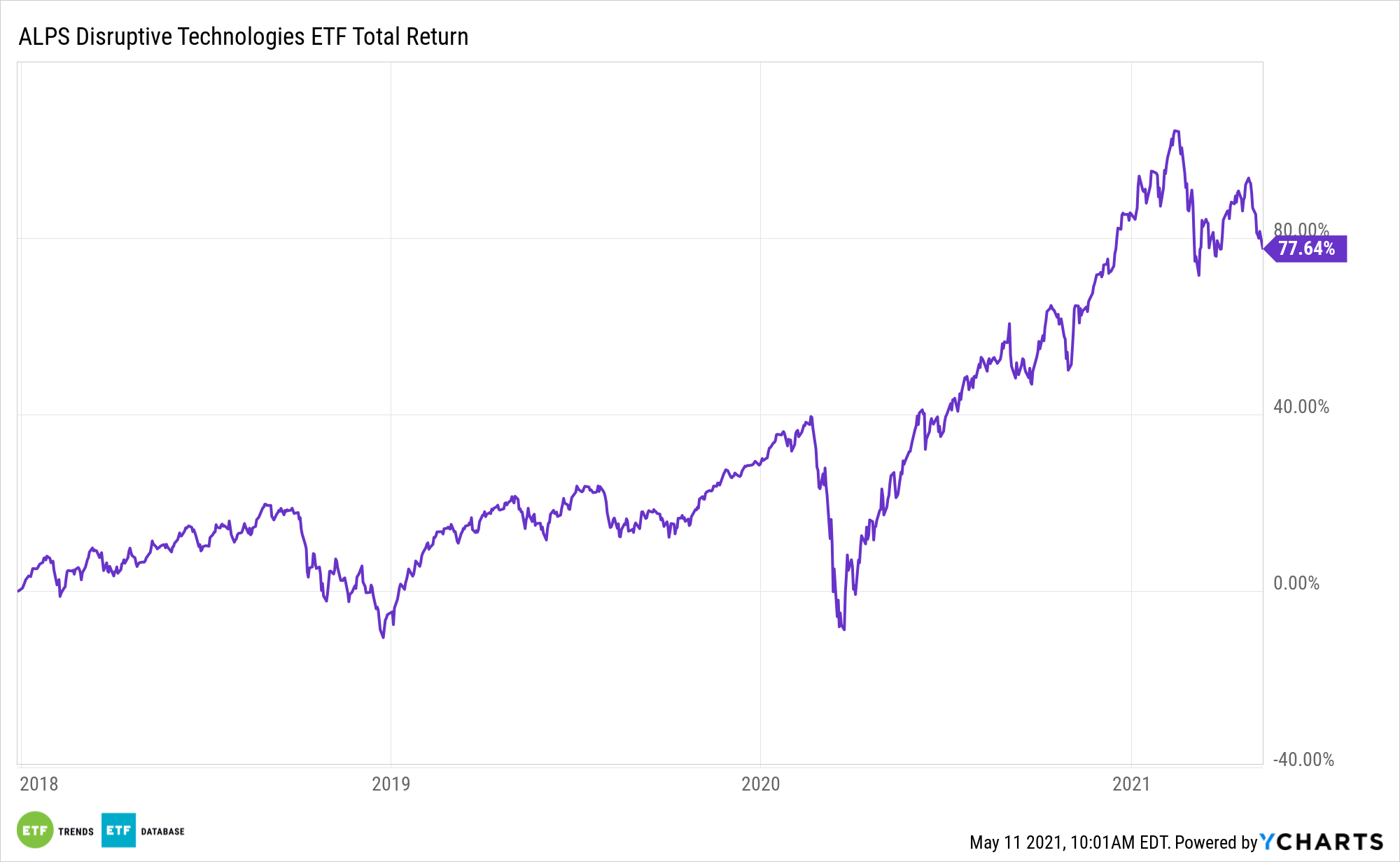Disruptive technology is backstopping the renewable energy revolution, and that movement could carry with it positive implications for assets like the ALPS Disruptive Technologies ETF (CBOE: DTEC).
DTEC tracks the Indxx Disruptive Technologies Index, which identifies companies using disruptive technologies across ten thematic areas, including Healthcare Innovation, Internet of Things, Clean Energy and Smart Grid, Cloud Computing, Data and Analytics, FinTech, Robotics, Artificial Intelligence, Cybersecurity, 3D Printing, and Mobile Payments.
The ETF’s clean energy and smart grid allocations are relevant to investors at a time of soaring energy storage demands.
“2021 will be a record year for the energy storage industry as installations exceed 10 GW for the first time, increasing from 4.5 GW in 2020,” according to IHS Markit. “As a critical component of the energy transition, energy storage systems are needed to help balance intermittency of renewable generation, provide a cost-effective and lowemission (sic) source of critical capacity, and empower customers to manage their energy demand.”

A Political Push for ‘DTEC’
As a diversified play on disruptive technology, DTEC’s price action isn’t overly dependent on a single theme represented under its umbrella. Still, global political momentum for renewable energy is a potential catalyst for the ALPS fund.
“Policy makers across the world continue to pivot towards taking greater climate change action outlining plans for greenhouse gas (GHG) emission reduction,” notes Markit. “In the United States, President Joe Biden signed the ‘Executive Order on Tackling the Climate Crisis at Home and Abroad,’ recognizing the urgency of the climate crisis and the need to put the United States on a path to achieve net-zero emissions by no later than 2050. Mainland China’s momentous 2020 pledge to become net zero by 2060 sets 26% of today’s GHG emissions on a path toward eradication. In Europe, the European Commission will start reviewing its renewables target, its carbon market and possibly consider a carbon border tax in 2021.”
Political momentum coupled with escalating needs for clean energy storage are factors boding well for the long-term DTEC thesis.
“This policy drive, but also continued cost declines will be the foundation for continued growth in the deployment of renewable energy resources, with annual gross additions reaching almost 300 GW by 2024,” adds Markit. “The increase in intermittent renewable generation, coupled with the electrification of transport, drives emission reduction action. At the same time, it creates an ever more urgent need for critical system flexibility and ‘peaking’ capacity.”
Other technology funds to consider include the Technology Select Sector SPDR ETF (NYSEArca: XLK) and the Fidelity MSCI Information Technology Index ETF (FTEC).
For more on cornerstone strategies, visit our ETF Building Blocks Channel.
The opinions and forecasts expressed herein are solely those of Tom Lydon, and may not actually come to pass. Information on this site should not be used or construed as an offer to sell, a solicitation of an offer to buy, or a recommendation for any product.








